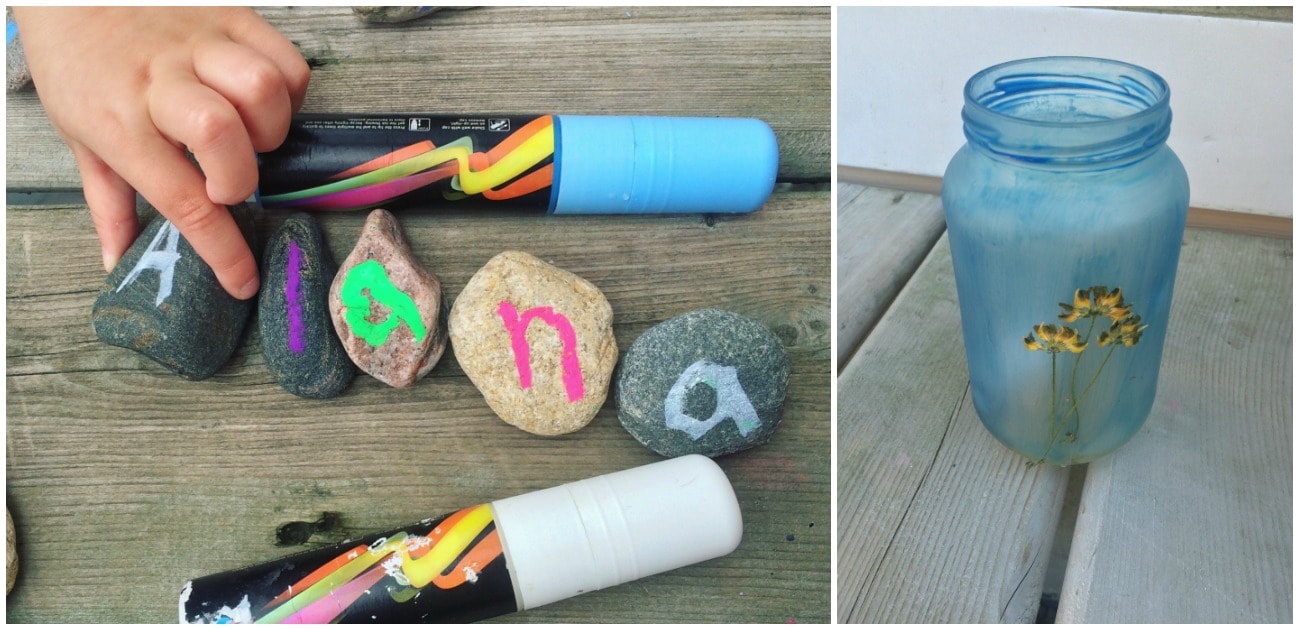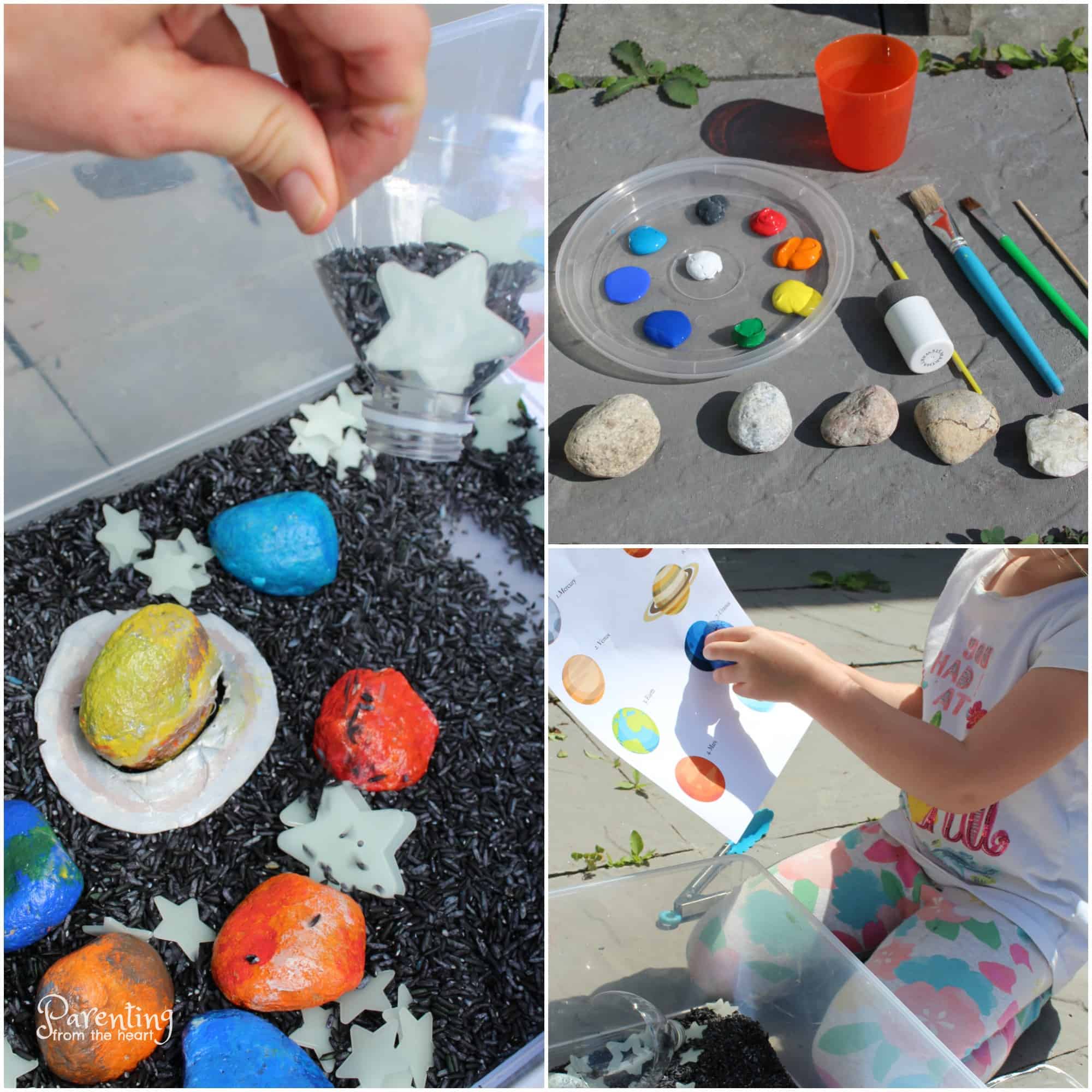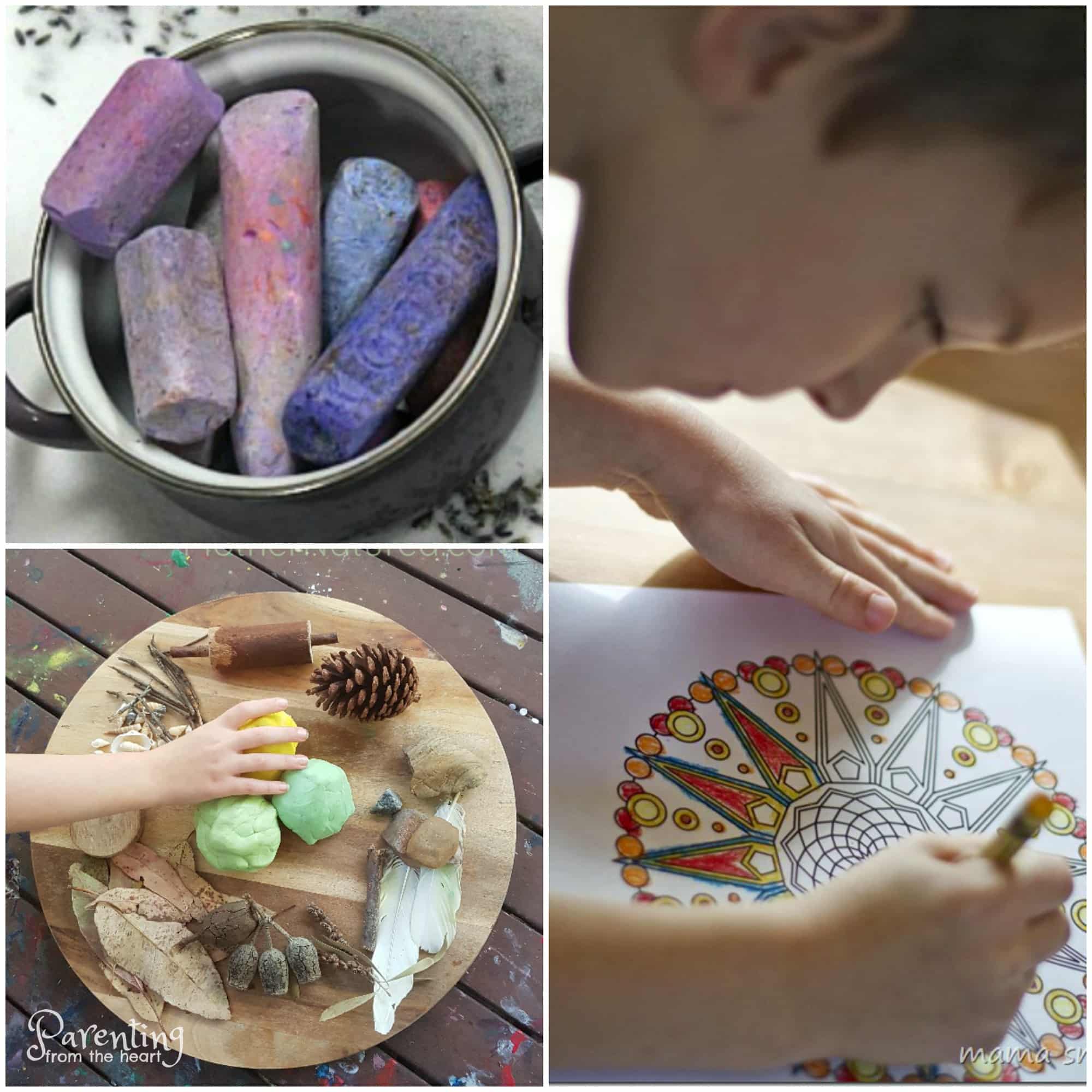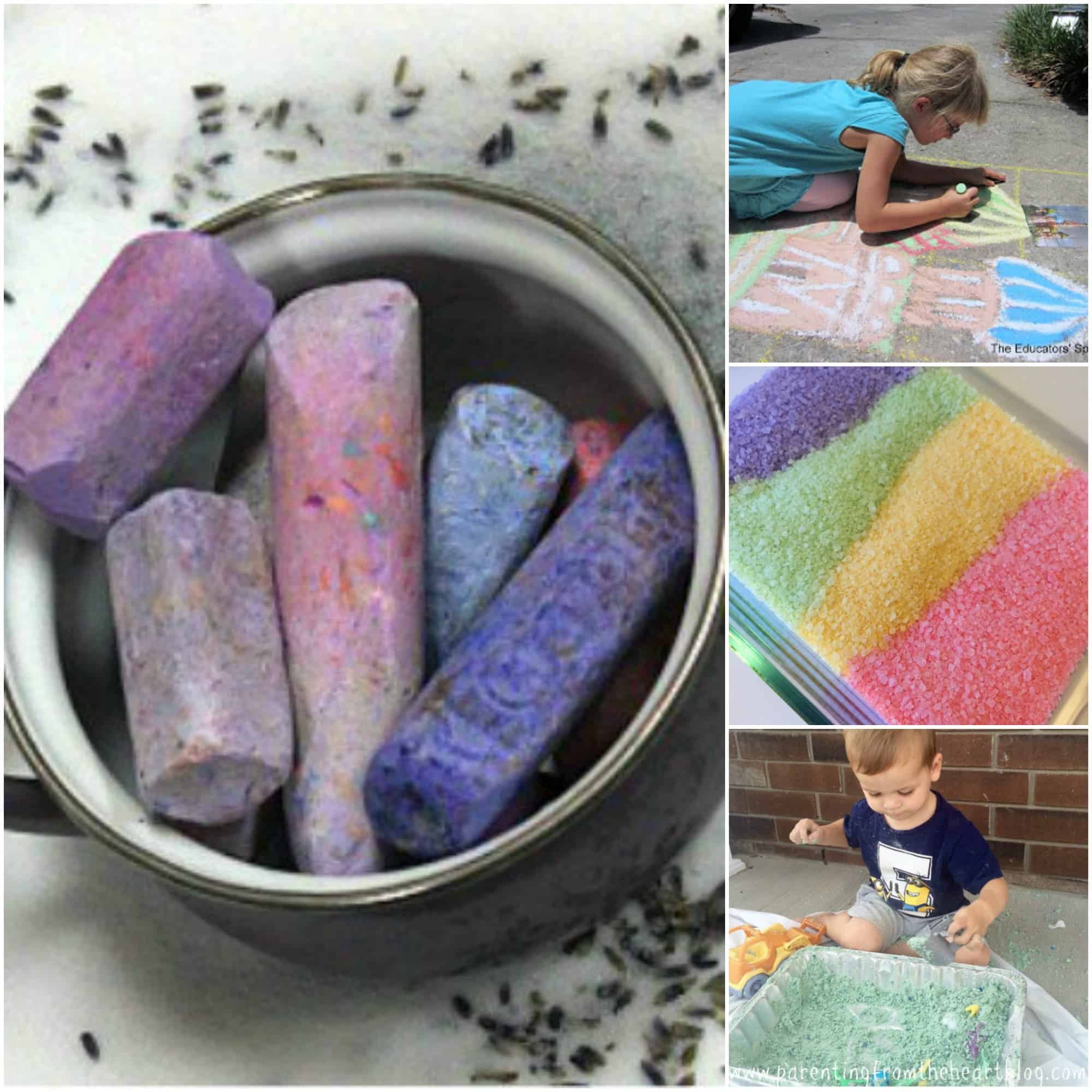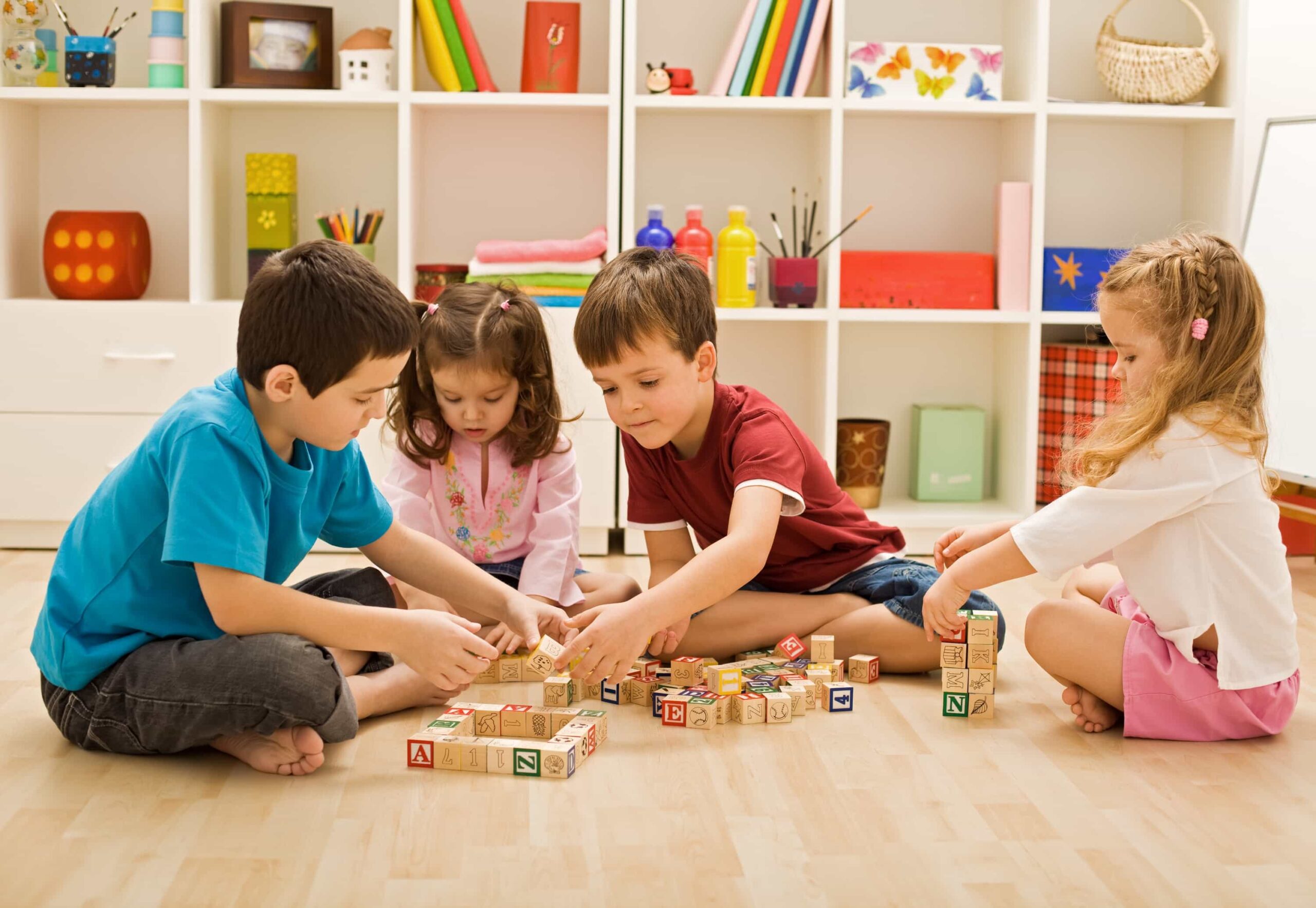We love nature scavenger hunts in our family. It’s one of the ways to truly experience the wonderment of life through a child’s eyes. We’ve made lists and gone out with bins, basket, or bags. But there have also been times we’ve been stuck outside, waiting for an event or an appointment and I’ve simply made a verbal list of things for my kids to collect with their hands. Yesterday was especially fun. I had some craft ideas involving nature. By the time we were ready to head out, we could hear thunder off in the distance. A storm wasn’t too far off. While I understand that most would take heed of the weather’s warnings and change their plans, I couldn’t resist going out. Honestly, I find some of the most fun can be had right before an impending storm. Rather than having unlimited time at the park or on a trail, we find ourselves really appreciating each moment before the sky opens up. And so yesterday, my son, daughter, and I ran out feeling a little rebellious as our neighbours sought pre-emptive cover.
We collected all sorts of items in our baskets. One of my favourite aspects of living in my current city is that the city does not permit the use of herbicides. As a result, the grass on the roadsides and local playgrounds are teaming with gorgeous wildflowers. Aside from flowers, we managed to grab sticks, rocks, bark mulch, leaves, and mud (my daughter insisted, we needed mud). Once home, we took out some of our favourite craft supplies, items from our recycling bins, brushed off our imaginations, and got busy. Here are the ways we brought our nature scavenger hunt to life and how you can too!
What You’ll Need for a Scavenger Hunt
- Create a list using pictures and/or words. Or, simply use a mental list. Pinterest has some great printables to make the process a bit easier.
- Grab a basket, container, or bag.
- Option to bring a camera or camera phone to capture images of insects, birds, and other wildlife.
- If you are venturing into forests and potentially protected areas, please familiarize yourself with protected and endangered plants. If unsure, don’t pick wildflowers. Dandelions are always fair game!
7 Nature Scavenger Hunt Crafts
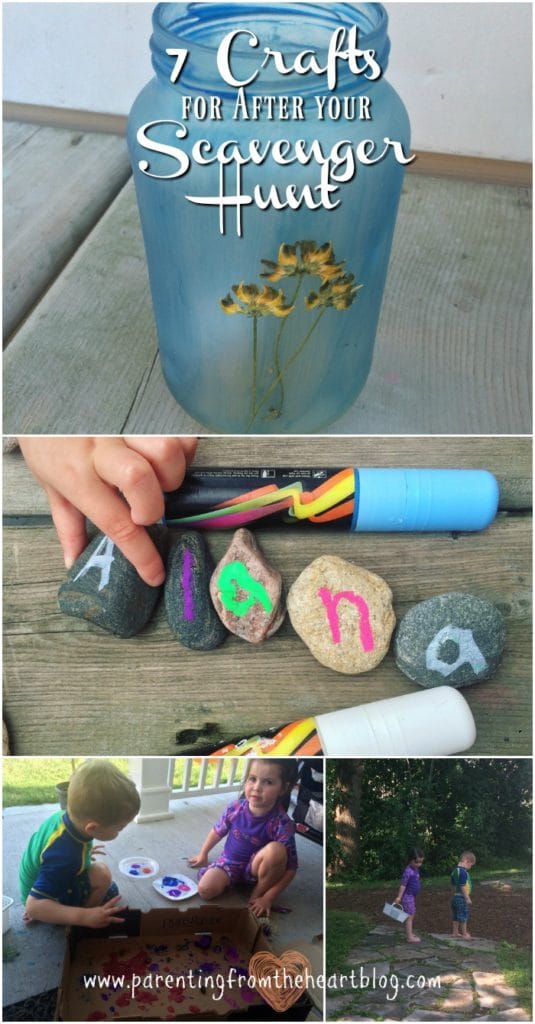
1. Three Painted Rock Activities
Pet Rocks
While pet rocks may seem redundant, to your kids, they’re likely very exciting. All you need is some tempera paint, fine paint brushes, and a little bit of vision!
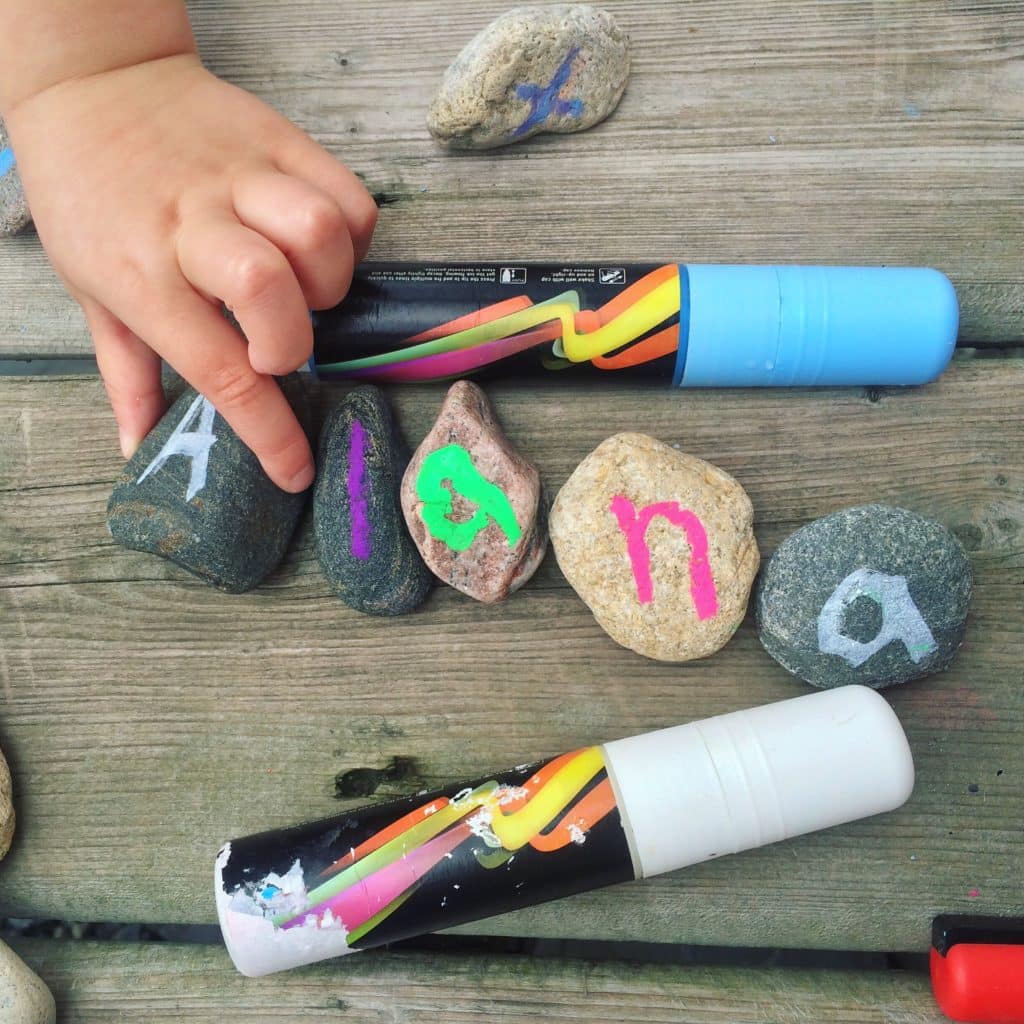
Alphabet Rocks
Using tempera paint or chalk markers, write the letters of your child’s name and/or common words (mom, dad, cat, dog) and have your child organize the letters appropriately. This activity is great for letter recognition, early literacy, and play-based learning as a whole.
[Continue reading here]







